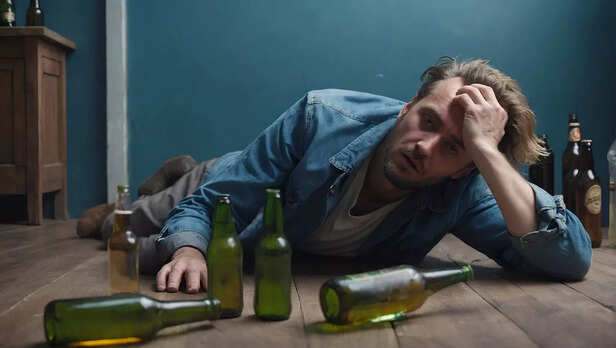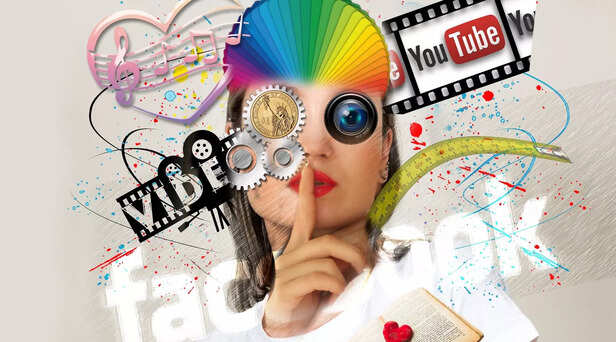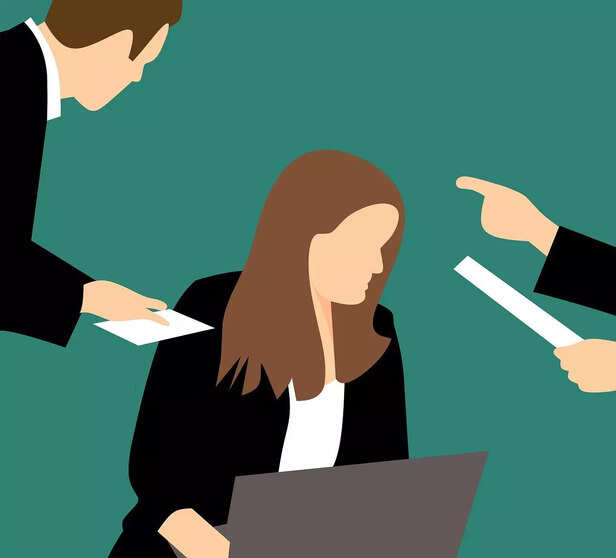When Media Makes Bad Behavior Look Cool, Women Pay the Price
Rinki | Sep 05, 2025, 20:00 IST
Woman drinking
( Image credit : Freepik )
Alcohol and negative acts shown in media can make people think such behavior is normal and acceptable, leading to an increase in rape cases. When alcohol is involved, offenders are often blamed less, and victims face stigma, which discourages reporting crimes. Media portrayal can also boost wrong ideas about gender and consent, fueling more bad behavior.
Rape is a serious problem that affects millions of people around the world, leaving deep emotional scars on survivors. Many experts believe that alcohol use and how bad behavior is portrayed in movies, TV shows, and music can play an important role in increasing cases of rape. This article explains how these factors contribute to the problem, why public attitudes matter, and what can be done to reduce such crimes.

Alcohol is often present in many rape cases, with studies showing about half of rapes involve drinking, either by the perpetrator, the victim, or both. Alcohol lowers inhibitions, clouds judgment, and makes it harder for people to read social signals clearly. Someone under the influence may misinterpret signals, leading to risky choices and crossing boundaries. The victim may not be able to say "no" forcefully, or may be targeted for being intoxicated. This does not excuse the crime, but shows how alcohol can contribute to risky situations.

Television, movies, and online content often show alcohol use and bad behavior, sometimes making it look cool or normal. If people see such behavior repeated and celebrated, they might think it is acceptable or even expected. Media also sometimes blames the victim, especially if alcohol was involved in making viewers believe that the victim “asked for it,” which is completely wrong. These ideas can normalize mistreatment or violence, and make people less likely to help survivors or prevent crimes.

When a person is assaulted after drinking, society can unfairly blame the victim for what happened. Survivors who drank alcohol before being assaulted are often blamed, seen as less believable, or shamed for their choices. This stigma is harmful, as it makes people scared to report crimes or seek help. Blaming victims instead of holding perpetrators accountable lets offenders go free and keeps rape rates high.

Media can spread wrong ideas about gender, power, and consent. It might show women as objects or suggest that drinking leads to sex, ignoring the need for clear, enthusiastic consent. Such portrayals give people confusing messages about what is okay and what is not, encouraging aggressive or harmful behavior. This confusion can cause some people to cross lines they otherwise would not.

When alcohol use and bad conduct are glamorized in media, and victims are blamed instead of criminals, the whole society is affected. People might not take rape seriously, and some may repeat the behaviors they see on screen. Research shows that places or groups with heavy alcohol use and more exposure to negative media representations tend to have higher rates of sexual assault. Breaking this cycle means changing how people think and act.
Rape is never the victim's fault—no matter what the media shows or how much alcohol was consumed. Society must challenge harmful stereotypes, stop blaming victims, and promote healthy ideas about consent and respect. Media producers should be more responsible, showing positive role models and honest discussions about alcohol, consent, and personal responsibility. With education, awareness, and community support, everyone can help reduce the number of rape cases and create a safer, more respectful society for all people.
Explore the latest trends and tips in Health & Fitness, Spiritual, Travel, Life Hacks, Trending, Fashion & Beauty, and Relationships at Times Life!
1. Alcohol and Its Effects

Effects of Alcohol
( Image credit : Pixabay )
Alcohol is often present in many rape cases, with studies showing about half of rapes involve drinking, either by the perpetrator, the victim, or both. Alcohol lowers inhibitions, clouds judgment, and makes it harder for people to read social signals clearly. Someone under the influence may misinterpret signals, leading to risky choices and crossing boundaries. The victim may not be able to say "no" forcefully, or may be targeted for being intoxicated. This does not excuse the crime, but shows how alcohol can contribute to risky situations.
2. Media's Role in Shaping Attitudes

Role of Media
( Image credit : Pixabay )
Television, movies, and online content often show alcohol use and bad behavior, sometimes making it look cool or normal. If people see such behavior repeated and celebrated, they might think it is acceptable or even expected. Media also sometimes blames the victim, especially if alcohol was involved in making viewers believe that the victim “asked for it,” which is completely wrong. These ideas can normalize mistreatment or violence, and make people less likely to help survivors or prevent crimes.
3. Victim-Blaming and Public Stigma

Victim Blaming
( Image credit : Pixabay )
When a person is assaulted after drinking, society can unfairly blame the victim for what happened. Survivors who drank alcohol before being assaulted are often blamed, seen as less believable, or shamed for their choices. This stigma is harmful, as it makes people scared to report crimes or seek help. Blaming victims instead of holding perpetrators accountable lets offenders go free and keeps rape rates high.
4. Misconceptions Spread by Media

Questioning
( Image credit : Pixabay )
Media can spread wrong ideas about gender, power, and consent. It might show women as objects or suggest that drinking leads to sex, ignoring the need for clear, enthusiastic consent. Such portrayals give people confusing messages about what is okay and what is not, encouraging aggressive or harmful behavior. This confusion can cause some people to cross lines they otherwise would not.
5. Connection Between Alcohol, Media, and Rape Rates

Connection
( Image credit : Pixabay )
When alcohol use and bad conduct are glamorized in media, and victims are blamed instead of criminals, the whole society is affected. People might not take rape seriously, and some may repeat the behaviors they see on screen. Research shows that places or groups with heavy alcohol use and more exposure to negative media representations tend to have higher rates of sexual assault. Breaking this cycle means changing how people think and act.
In final analysis
Explore the latest trends and tips in Health & Fitness, Spiritual, Travel, Life Hacks, Trending, Fashion & Beauty, and Relationships at Times Life!
Frequently Asked Questions (FAQs)
- How do movies and TV shows affect people’s attitudes toward rape?
Media that show harmful behavior or victim-blaming can make people think such acts are normal, spreading wrong ideas about consent and respect. - How does bad behavior in media influence society?
Repeated exposure to disrespectful acts in media can make violent acts seem acceptable, changing social norms in a negative way. - Are men and women equally affected by alcohol-related sexual assault?
Research shows both men and women drink before assaults, but men are more often the perpetrators, and women are the majority of victims. - How can beliefs about alcohol increase risky behavior?
Some people think alcohol boosts sexuality and reduces responsibility, which can make them more likely to behave aggressively or ignore others' boundaries. - What can media do to help prevent rape?
Media can show positive role models, educate about consent, and avoid glamorizing alcohol or bad conduct, encouraging respect and safety for everyone.
